The Story Behind James Bond
007 pages of thrills, gadgets, ladies & legal battles
Bond fans have been shaken and stirred by the news that Bond 23 – deep into development with Sam Mendes set to direct Daniel Craig – has been postponed indefinitely due to MGM’s financial woes .
But don't fear! Bond is Teflon-coated, and has survived legal disputes as surely as laser beams, pythons and poisonous shoes.
Hell, he’s been officially played by nearly as many actors as a cat has lives.
So we’re taking a chance to take stock of 48 years of Bondage to remind everyone that – as the films always used to put it – James Bond will return.
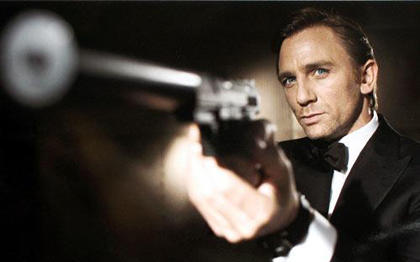
From Fleming To Film
The James Bond story starts, of course, with Ian Fleming.
Educated at Eton and Sandhurst, Fleming specialised in Naval Intelligence and rose to the rank of Commander during WWII.
Sign up for the Total Film Newsletter
Bringing all the latest movie news, features, and reviews to your inbox
He was already sharpening those storytelling skills, as he devised plots and strategies to help beat the Nazis. As Head of 30 Assault Unit, he planned missions for specially-trained commando raids to secure lucrative intelligence.
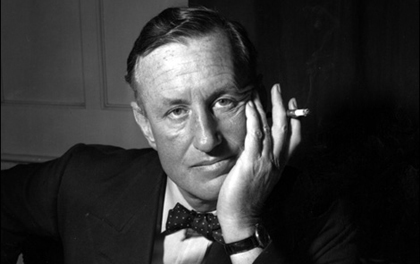
These experiences formed the basis for a series of novels about a secret agent, which he began to write at the Jamaican estate of the Bond family, whose son James – a natural history writer – provided the character’s name.
Debut Casino Royale was published in 1953, the first of what were to be 14 novels and short-story collections detailing the adventures of 007: suave seducer, deadly killer, and the perfect English hero for the Cold War.
The books’ bustling intrigue and action quickly found their way into other media, when Barry Nelson played Jimmy Bond in an American TV adaptation of Casino Royale.
Then, future Blockbuster presenter Bob Holness asked for a ‘JB’ in a South African radio adaptation in Moonraker . Bigger mainstream appeal came when the novels were serialised as comic strips in the Daily Express.
The big-screen seemed inevitable and, in 1959, Fleming began writing an original Bond screenplay with producer Kevin McClory. Their project would be abandoned but later form the basis of Fleming’s novel Thunderball , two film adaptations and no small amount of legal dispute.
Finally, in 1961, EON Productions, made up of entrepreneurial producers Albert Broccoli and Harry Saltzman, purchased the rights to the series - bar Casino Royale - and secured United Artists as distributor. All they needed now was the right man to play 007.
Next: 1962-1967 Sean Connery is Bond... James Bond [page-break]
1962-1967 Sean Connery is Bond... James Bond

Early candidates included David Niven, future Prisoner Patrick McGoohan and - Broccoli's favourite - Cary Grant, fresh off Hitchcock's North By Northwest , a film whose serio-comic thrills would be borrowed by the Bond series for years.
Instead, much to Fleming's initial displeasure, the role went to jobbing Scots actor Sean Connery, whose biggest part to date was in Oirish whimsy Darby O'Gill and the Little People .
But the choice of Connery was inspired: while nobody's idea of an English gentleman, as an ex-bodybuilder he was physically imposing enough to convince as a licensed killer, and wryly funny enough to charm mainstream audiences.
Broccoli and Saltzman, influenced as much by the rip-roaring comic strips as Fleming's cruelly violent pot-boilers, surrounded Connery from the start with many of the elements still associated with the series...
Bikin’d Ursula Andress, stepping out of the Caribbean, provided the exotic glamour. Crazy Commie chinaman Doctor No oozed hissable xenophobic villainy. And the breakneck pace, copious fights and chases, and Monty Norman’s infectious, jazzy theme.

British audiences, more used to kitchen sink realism, were wowed. Better still, so was the rest of the globe. Over the next four films, just about all of the elements that made Bond so iconic were introduced...
Pop stars belting out John Barry’s instant classic tunes, Q and his mighty gadgets, memorable henchmen like killer hat throwing Oddjob; breathtaking stunts and outrageous sets.
The Bond series faced its first legal battle in order to secure the rights to the film of Thunderball , co-owned by Kevin McClory. EON won, but the price was that McClory retained the right to remake the story after ten years.
Meanwhile Connery, keen to avoid typecasting as an action hero, worked with Hitchcock ( Marnie ) and Sidney Lumet ( The Hill ) to widespread acclaim. After You Only Live Twice, Connery jumped ship to pursue other acting options.
Broccoli and Saltzman were left with a conundrum: could they replace their leading man to ensure the continued survival of the Bond series?
Positively Shocking Quip: After Connery sees off a henchman in Thunderball , he deadpans, “I think he got the point.”
Boys With Toys: The secret agent’s must-have accessory, as modelled in From Russia With Love . A briefcase that comes with throwing knife, tear gas booby trap and sniper rifle as standard. Practical yet deadly.
Petrolhead: Goldfinger 's customised Aston Martin DB5, with ejector seat and machine guns.
Girls in Bondage : Honor Blackman as Pussy Galore, Daniela Bianchi as Tatiana Romanova.
Expecting You To Die : Joseph Wiseman as Dr No, Gert Fröbe as Auric Goldfinger, Harold Sakata as Oddjob.

Action! The brutal minimalism of Connery’s dust-up with Robert Shaw in From Russia With Love is still startling, but it has to You Only Live Twice ’s climactic assault on Blofeld’s volcano, probably the most Bondian scene of the lot.
Belting It Out: Shirley Bassey's mighty Goldfinger, the (ahem) gold standard of Bond tunes.
James Bland; The shark hasn’t even been sighted yet, let alone jumped over, but asking us to swallow Connery, in comedy eyebrows, as Japanese in You Only Live Twice is an early toe in the water.
Next: 1969-1971 George Lazenby Is The 'Other Fella' [page-break]
1969-1971 George Lazenby Is The 'Other Fella'

With huge media and public interest on Connery’s replacement, EON hunted high and low.
Two likely British candidates were Roger Moore, who was tied to his contract with TV show The Saint , and Shakespearian thesp Timothy Dalton, who ruled himself out for being too young.
Meanwhile, Columbia Pictures, who still had the rights to Casino Royale , released an all-star comedic extravaganza (David Niven, Peter Sellers, Woody Allen, Orson Welles) that sent up the whole idea of James Bond.
Finally, Broccoli and Saltzman gambled on George Lazenby, an Australian model with limited acting experience, who convinced on the strength of his 007- esque manner in screen tests and commercials work.
Lazenby’s debut – and only – Bond certainly took risks. On Her Majesty’s Secret Service was a bona-fide tragic romance, as Bond falls in love and marries Teresa di Vicenzo, only for her to be assassinated en route to the honeymoon.

And while structured as a semi-sequel to You Only Live Twice , Lazenby in-joked that “this never happened to the other fella,” setting up the vague possibility that there were many Bonds using a shared code name – pretty much the premise of the ’67 Casino Royale .
Lazenby’s stilted delivery, allied to the film’s unusual elements, killed its chances at the box office – and Lazenby, perhaps unfairly, was out. The search was back on for a new Bond...or an old one.
Amazingly, EON persuaded Connery to make a comeback. Or, rather, he persuaded them to accept his terms: a then-record salary and plenty of residual perks.
The Seventies began with Diamonds Are Forever , at once reassuringly familiar (Connery, John Barry, Shirley Bassey, Blofeld) and thoroughly modern, with a camp, cynical tone that lounge lizard Connery, clearly in it only for the money, encouraged.
Connery quit again, but this time he’d left a template that could be followed by EON.
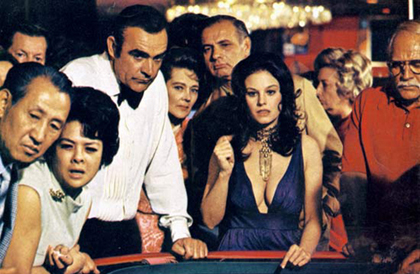
Positively Shocking Quip: As an assailant is pureed in a snow blower in On Her Majesty's Secret Service , Lazenby drawls, “He had a lot of guts.”
Boys With Toys: Handy for beating the casinos in Vegas, Q gives Bond an “Electro-Magnetic RPM Controller” for a guaranteed jackpot every time on the slot machines.
Petrolhead : Lazenby joins an ice-rink stock-car derby in a Mercury Cougar XR7.
Girls in Bondage : Diana Rigg as Teresa Bond, RIP; Jill St John as Tiffany Case
Expecting You To Die : Telly Savalas and Charles Gray as Blofeld, Bruce Glover and Putter Smith as Mr Wint and Mr Kidd
Action! The highpoint of OHMSS is its vertiginous ski chase, still the benchmark for alpine action.
Belting It Out : Louis Armstrong's woozy, gorgeous We Have All The Time In The World - not the actual credits tune from On Her Majesty's Secret Service , but probably the finest 007-related song of the lot.
James Bland : In Diamonds Are Forever , Connery makes his low-speed escape from a research base in...a moon buggy. Was anybody taking this seriously?
Next: 1973 - 1985 Roger Moore, Moore, Moore [page-break]
1973 - 1985 Roger Moore, Moore, Moore
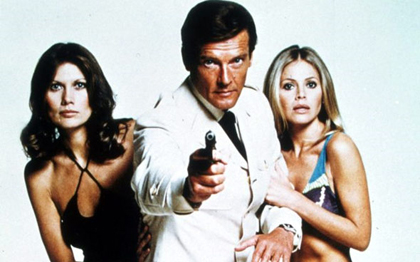
When Lazenby was cast, Roger Moore was still playing a different spy – Simon Templar – in the ITV series The Saint , but by the time EON was looking to replace Connery for the second time, he was free and willing to go into Bondage.
Moore was to become the longest-running Bond with seven consecutive performances in the role, one released every two years on average. After the trials and tribulations around the turn of the decade, that was exactly what the series needed: a stable, reliable presence.
Especially so after Saltzman sold his share in EON in 1975 and United Artists was bought out by MGM in 1981, the first of many big shake-ups behind the scenes.
Moore anchored the films with a suave, playboy persona that capitalised on Connery’s last performance but was poles apart from the colder, steelier Bond of the early 60s.
Older than Connery – Moore 45 when he took the role –action was left to the stuntmen, with Moore stepping in to deliver the gags in close-up.

In many ways, the Moore era acts as a brazen parody, not just of Bond but the wider pop culture in which the films were made: Live And Let Die riffed on blaxploitation pics, while Moonraker – the first Bond movie made after Star Wars – took 007 into space.
It wasn't all tomfoolery: For Your Eyes Only kicked off the 80s with a commendable attempt at going back to basics, but the silliness was back with a vengeance by 1985’s A View To A Kill .
Worse, Connery was back in Never Say Never Again , Kevin McClory's 'unofficial' remake of Thunderball , to show up Moore's moves. The actor, now 58, was creaking – and so was the franchise.
Positively Shocking Quip: Caught inflagrante by M with Russian agent Anya Amasova in The Spy Who Loved Me , Bond’s excuse is that he’s “keeping the British end up, Sir.”
Boys With Toys : The magnetic watch in Live And Let Die . Yes, it comes in handy for death-defying, but most of us would want it for hands-free dress unzipping, as ably demonstrated at the start of the film.
Petrolhead : A Lotus Esprit with a catch: it turns into a submarine, fitted with torpedoes and depth charges.
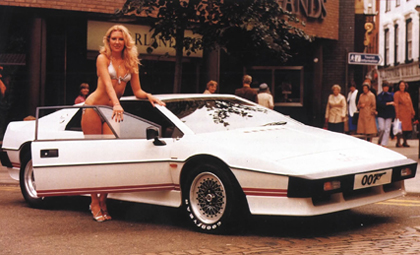
Girls in Bondage : Jane Seymour as Solitaire, Britt Ekland as Mary Goodnight, Barbara Bach as Anya Amasova
Expecting You To Die: Christopher Lee as Scaramanga; Richard Kiel as Jaws; Christopher Walken as Max Zorin.
Action! Ignore the daft sound effect. Bond’s 360 degree daredevil twist across a broken bridge is one of the greatest car stunts seen in the movies, a fiendishly intricate manoeuvre made possible by computer modelling and the bravery of driver Bumps Willard.
Belting It Out : Paul McCartney brings stop-start rock dynamics to Bond with Live And Let Die .
James Bland : Metal-toothed heavy Jaws, an icon from The Spy Who Loved Me , is brought back in Moonraker ...so he can find love with a pony-tailed strongwomen in Rio. Imagine the foreplay. Or better still, don’t.
Next: 1987-1989 Timothy Dalton Goes Dark [page-break]
1987-1989 Timothy Dalton Goes Dark

Broccoli’s first instinct post-Moore was to cast another actor with form in a tongue-in-cheek TV show, Remington Steele ’s Pierce Brosnan. However, just as the small print had prevented Moore in the Sixties, so Brosnan was tied up here.
So it was that Timothy Dalton – once “too young” but now twenty years older and wiser – got the part, on the proviso that he’d bring a much-needed reality check to proceedings. Dalton was intended as a return to the Bond not really seen on-screen, a fiercely dedicated killing machine.
Out with the gadgets, out with the sex (this being the AIDS-conscious 80s), Dalton was convincingly cold – almost too much, lacking the dry wit of Moore, Connery or even the new generation of wise-guy action heroes like Martin Riggs or John McClane.
The bloody Licence To Kill – the first 15-certificate Bond movie – was a conspicuous attempt to get with the times, but audiences baulked. And then, worse.
After a complicated series of sales and licensing agreements, EON sued MGM/UA to put the Bond series into limbo for the first half of the Nineties.
Dalton was officially still on notice to make his third appearance as 007, but by 1994, even he had had enough and resigned.

Positively Shocking Quip : On seeing bad guy Heller impaled on a forklift truck, Dalton observes, “Looks like he came to a dead end.”
Boys With Toys : Q discovers hip-hop with the Ghetto Blaster: literally, a boombox-cum-rocket launcher. Bring the noise.
Petrolhead : Another Aston Martin in The Living Daylights , this one customised to suit the icy climes of Austria: tire spikes and retractable skies. Alongside the usual array of weaponry, of course.
Girls in Bondage : Maryam D’Abo as Kara Milovy, Carey Lowell as Pam Bouvier
Expecting You To Die : Jeroen Krabbe as Georgi Koskov, Robert Davi as Franz Sanchez
Action! Licence To Kill ends with one of the most sustained chase sequences in Bond, as 007 improvises means of destroying four oil tankers loaded with cocaine solution.
Belting It Out : a-ha scare The Living Daylights out of us with 80s European synth-pop.
James Bland : It’s only obvious in retrospect, but The Living Daylights suffers the same socio-political flaw as Rambo 3 . Namely making anti-Soviet mujahideen – precursors of the Taliban and Osama Bin Laden – heroes of the piece. Oops.
Next: 1995-2002 The Rise And Fall Of Pierce Brosnan [page-break]
1995-2002 The Rise And Fall Of Pierce Brosnan

Legal wrangling over, Broccoli got on with picking up the pieces of the shattered Bond franchise. After six years away, in a changed landscape of CGI-led blockbusters and darkly comic indies, what place was there for 007?
To answer the question, EON finally bagged Pierce Brosnan, who threw himself into the role he’d been prevented from essaying in the 80s. Pitching his performance as the mid-point between Moore’s light-hearted playboy and Connery’s steel, Brosnan offered the best of both worlds.
Audiences, it seemed, hadn’t tired of Bond, making Goldeneye the most successful 007 movie at the box-office to date. A fitting legacy for Broccoli, who died in 1996 having seen his life’s work revitalised and renewed.
Instantly, Bond was a player once more, and the production line swung back into place. Brosnan’s follow-ups served a familiar, knowing mix of straight-forward action and quip-heavy dialogue – but, by cleaving so close to old templates, those diminishing returns kicked in quicker.

By 2002’s Die Another Day , all too self-consciously trading on its status as both the 20th official movie and the 40th anniversary of Dr No ’s premiere, the self-parody had become absolute.
Another break was implemented, the goal – a wholesale revamp, or reboot, of the Bond name, going back to basics with Casino Royale .
Lifelong Bond fan Quentin Tarantino offered his services as a potential director. Brosnan was eager; Broccoli’s heirs – daughter Barabara and son-in-law Michael G. Wilson – weren’t so keen. However, they did have their own bright idea...
Positively Shocking Quip : A bad guy is killed following into a printing press; Brosnan’s considered response is, “They’ll print anything these days.”
Boys With Toys : A grenade in a pen. Not massively exciting in Bond movie terms, but just what all writers with a looming deadline need to focus the mind.
Petrolhead : No British loyalty here, as Bond opts for a Beemer. However, with its nifty Ericsson remote control allowing a more flexible approach to driving, he’s almost forgiven.
Girls in Bondage : Michelle Yeoh as Wai Lin, Denise Richards as Dr Christmas Jones, Halle Berry as Jinx

Expecting You To Die: Sean Bean as Alec Trevelyan; Jonathan Pryce as Elliot Carver; Robert Carlyle as Renard
Action! 007 commandeers a tank in St Petersberg and goes careering through the streets in Goldeneye , as the Bond theme – hitherto muted – is blasted out of the speakers to confirm Brosnan is Bond.
Belting It Out : Unlikely collaborations in pop: Tina Turner singing the Bono/Edge-penned Goldeneye .
James Bland : Brosnan kite surfs on a tidal wave in Die Another Day . If the idea isn’t lame enough, the shonky CGI execution seals it.
Next: 2006 - ? Daniel Craig: The Name’s Blonde... [page-break]
2006 - ? Daniel Craig: The Name’s Blonde...
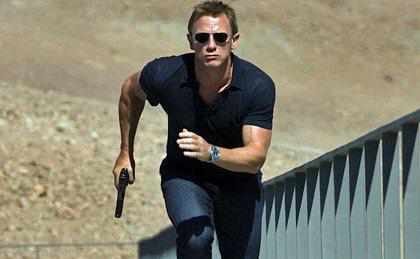
James Bond: tall, dark, dashing. Right? Not any more.
With Brosnan pretty much unbeatable as the ‘ideal’ of what Bond should look like, EON went the other way. If Bond’s a killer, shouldn’t he look like one?
Inspired by Matt Damon’s terse, tough assassin Jason Bourne, the casting team upped their game by proposing Daniel Craig: built like a bulldog, surly screen disposition, and blonde.
The hardcore fanbase was in uproar, but anybody who’d seen Craig’s convincing turn as a criminal anti-hero in Layer Cake – or his immortal Geordie in TV classic Our Friends In The North – had a hunch something interesting was afoot.
So it proved. Casino Royale was truly back to basics: a grassroots reinvention that showed us Bond’s beginnings with a realism seldom seen since Fleming signed away the film rights. With Craig pumped-up and taking no prisoners, here was the first 007 since Sean to truly convince as a hardened killer.

Casino Royale – and Craig – was an instant hit, and leapt to the top of fans’ and critics’ lists alike. And, with Quantum of Solace becoming the first direct sequel in the series, James Bond became a fully-functioning modern movie serial, rather than the episodic adventures of 007. The stage was set for a full-scale showdown with the shadowy Quantum organisation.
Of course, that’s currently in doubt following EON’s announcement that development on Bond 23 has been “suspended indefinitely.”
Should we be worried? Hardly: as history proves, the Bond films have long been a battleground - and the films' heritage are in the capable hands of Broccoli and Wilson.
Craig’s commitment to Bond, too, has been thorough and sincere since day one, yet this postponement will at least allow him to branch out and avoid typecasting so he'll be really hungry for the threequel by the time it comes out.
And don't forget - 2012 is the 50th anniversary of Bond on film. Not even the lawyers should be able to stop 007 from throwing one hell of a party.

Positively Shocking Quip : As Vesper Lynd announces herself as the money in Casino Royale , Bond concurs: “Every penny of it.”
Boys With Toys: Craig is the least techy Bond of the lot, but his cellphone - complete with identification imager - gives him a hell of a party trick.
Petrolhead: Back to the Aston Martin, this time a DBS V12. Useful add-on: a portable defibrilator.
Girls in Bondage : Eva Green as Vesper Lynd, Olga Kurylenko as Camille Montes,
Expecting You To Die: Mads Mikkelsen as Le Chiffre; Mathieu Amalric as Dominic Greene.
Action! Craig chases a free-running bomb maker across – and up – a construction site. With heart-stopping stuntwork courtesy of Parkour-pioneer Sebastien Foucan, it was a sign that the new era would hit the ground running...
Belting It Out: Jack White and Alicia Keys straddle the indie/mainstream spectrum with Quantum of Solace 's Another Way To Die.
James Bland : Nothing’s plumbed the depths too much yet, but he exemplary realism of the new regime takes a hit in Quantum of Solace , when Bond and Camille survive an unlikely tandem skydive.
Like This? Then try...
Sign up for our free weekly newsletter here .
Follow us on Twitter here .


